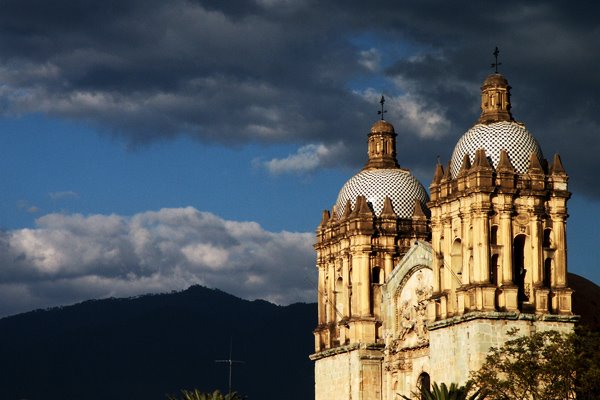An
article from the NYT is making the rounds today. Good! Oaxaca needs all the positive press it can get.
The past casts a sharp shadow here, wherever you look. You see it on
mountaintop plateaus, where the ruins of ancient pyramidal staircases
and capital-I-shaped ball fields hint at mysterious rituals that
disappeared over a millennium ago.
You see it during market days in nearby towns, whose traditions may be
even older than those Zapotec ruins. Stalls with cheap contemporary
kitsch — SpongeBob SquarePants T-shirts and bootleg Snow White baskets —
are juxtaposed with culinary offerings from other centuries: crunchy
grasshoppers laced with chili peppers, and mounds of black mole paste used for making spiced sauces.
You see it too in this town’s astonishing botanical garden of native
plants, whose exotic cactuses and succulents are bounded by the walls of
a 1500s Dominican monastery, the Spanish colonial structure shaping
plangent counterpoint with indigenous flora....
In Oaxaca, which lies on the southern end of the Mexican landmass as it
curves eastward to the isthmus, the first impression may be that of a
quaint Spanish colonial town set in a protected valley. There are more museums here than can readily be explained: museums devoted to stamps, to pre-Columbian statuary, to the region’s cultural histories, to contemporary artists, to archaeological sites.
But for all that immersion in heritage (Oaxaca has even received the
Unesco seal of approval as a World Heritage Site), there seems to be no
temptation to glaze over the past’s harshness and imagine a pastoral
harmony disrupted by colonization and only now struggling back. Leave
that well-worn narrative for back home, where it has, unfortunately,
become one of the embarrassments of the museum world.
The other
big story was the rain and devastation on the coast from tropical storm Carlota. It brought heavy rains here, but did a number on Puerto Escondido and coastal areas to the north. It has gone its way now,
but three died and there were mudslides and flooding.


No comments:
Post a Comment